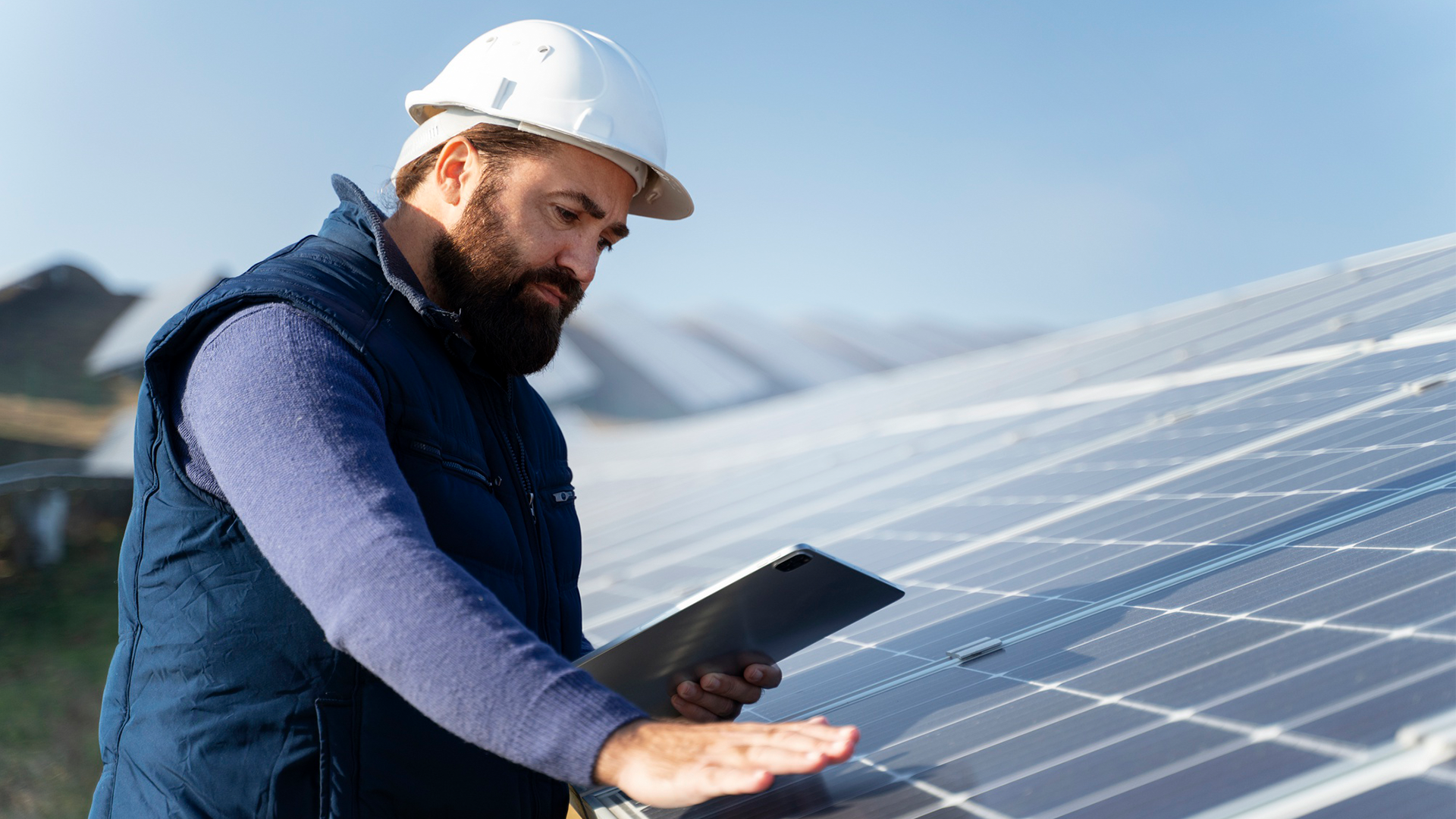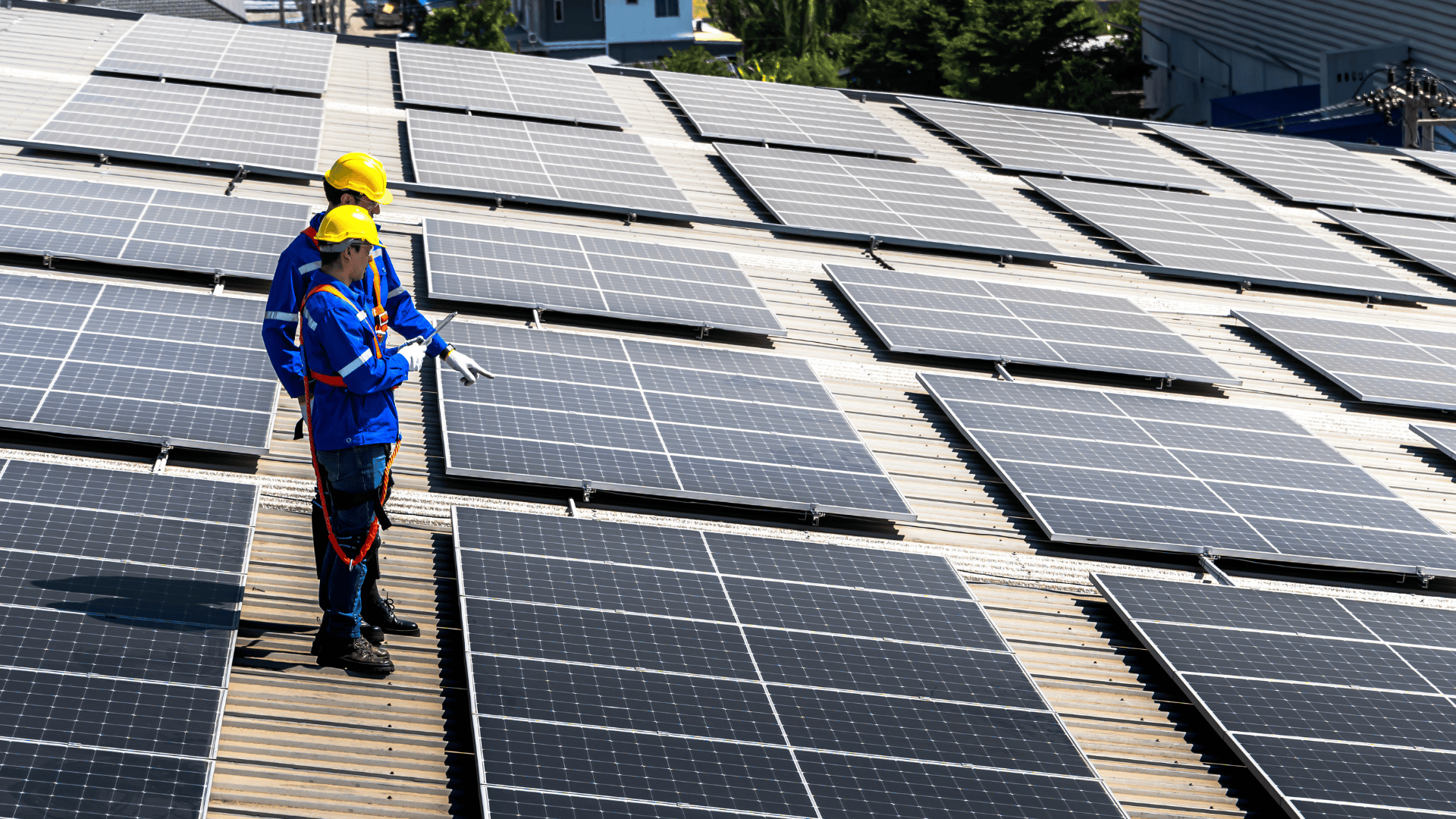October 10, 2023
We all know that solar panels need sunlight to generate electricity but what happens in the winter when it's cold and snowy outside? Will solar panels still generate power? Or are solar panels only useful during the summer?
In this blog post, we'll be breaking down everything related to solar performance in the winter - from whether solar panels work in snow or not to other precautions and maintenance tips that come with owning a system. You'll find peace of mind knowing what measures need to be taken for optimal safety and efficiency throughout even the coldest days of the season.
Do solar panels work in Snow and Winter Regions?
Yes, solar panels can still function effectively in snow and winter regions, although their energy production might be somewhat affected. While snow on solar panels can temporarily reduce their efficiency, modern solar arrays are designed to withstand winter weather conditions. Snow covering the panels blocks sunlight and reduces energy output, but as the snow melts or slides off, panels resume normal operation.
Additionally, panels are often installed at an angle to allow snow to slide off more easily. Though energy production might decrease during heavy snowfall, the overall benefits of renewable energy in reducing environmental impact remain substantial in snow-prone areas.
How much power do Solar Panels produce in Winter when compared with the Summer?
Solar panel production typically decreases in winter compared to summer due to factors such as reduced sunlight hours, lower sun angle, and potential snow coverage. In winter, solar panels receive fewer hours of direct sunlight and the sun's angle is lower in the sky, leading to lower energy production.
However, the extent of the decrease varies based on geographic location, panel orientation, and weather conditions. In regions with light dusting or quick-melting snow, panels can continue generating electricity as the snow melts or slides off due to their dark surface and underlying warmth.
Some excess electricity generated in sunny winter days might compensate for lower production during overcast periods.
Overall, while solar production may decrease during winter months, advancements in solar technology and system design help minimize the impact, enabling solar panels to continue contributing to renewable energy generation even in colder and snow-prone regions.
Want to know If Solar panels work in the Shade?
Do Solar Panels Work in Extremely Cold?
Solar power is a good source to generate energy because the sun's rays are free and available in most places all year round. How can we be sure that we'll get enough solar radiation during winter? This depends on whether or not the panels are efficient enough to produce electricity at low temperatures.
First of all one has to understand what efficiency means for solar-
Efficiency and Solar Panel Performance
Efficiency is the percentage of solar energy that is converted into useful electrical energy by the solar panels, that is, solar panel output.
At 0°C (32°F) on average an efficient crystalline module (monocrystalline or polycrystalline) would deliver about 16% efficiency. This means that only 16% of all solar radiation incident on this type of module becomes electricity. The rest is lost as heat during the conversion process. A thin-film solar cell can reach 20%-22% efficiency at these temperatures which is even a bit better.
The efficiency of solar panels decreases as the temperature drops. However, the decrease is not linear. For example, at -40°C (-40°F) the efficiency of a crystalline module would be about 10% and for a thin-film solar cell, it would be about 14%-15%.
So, even at very low temperatures, solar panels remain efficient enough to produce some electricity. This is good news especially if you have installed solar panels in cold areas or during winter time.
At, Sunbase, we provide a suite of the best software and tools to hundreds of companies, from Solar CRM to features like Door-to-door sales software/apps. Our field sales app is the perfect solution to handle your time management challenges and capture real-time data.
Power through Winter Storms with Solar Battery Storage
Keeping your solar panels in good shape during the cold winter months is essential for getting the most power out of them. When it comes to ensuring your system will keep on generating energy with maximum efficiency, perhaps the most important thing you can do is get reliable and industry-leading solar battery storage options.
Solar battery storage will allow you to store excess energy produced during summer months when days are longer and sunnier, and use it when there's less sunlight in winter, dramatically lowering your overall average cost per kWh.
Solar panel efficiency also tends to decrease at colder temperatures. However, this does not mean that shorter winter days should deter an investment in solar panels. While the functionality of solar panels decreases at colder temperatures, the energy they produce is still worth it because costs decrease as well – especially when paired with battery storage options.
What are Solar Snow Guards?
Solar snow guards are crucial components designed to address the challenges posed by snow accumulation on solar arrays, especially in regions prone to cold weather and heavy snowfall. These devices are strategically placed on or around solar panels to prevent or minimize the negative effects of snow cover.
When winter arrives, snow can accumulate on solar panels, significantly reducing their energy production by blocking sunlight. This reduced efficiency can impact the overall energy output of the solar array.
Solar snow guards work by preventing snow from completely covering the panels, allowing them to continue generating electricity even in snowy conditions.
By maintaining some exposure to sunlight, these devices help ensure that solar arrays remain productive during the winter months, making them essential for maximizing the efficiency and reliability of solar energy systems in cold climates.
Types of Solar Snow Guards
Solar snow guards come in different types to protect solar panels from the snow and ice that can accumulate on them during the winter. Here are some common types:
- Clamp-On Snow Guards: These are attached to the frame or edges of solar panels. They create a barrier that stops snow from sliding off the panels all at once, preventing damage and allowing the snow to melt gradually.
- Rail-Mounted Snow Guards: These are installed on the support rails of the solar panel system. They keep the snow from sliding down the panels by holding it in place, allowing for a controlled melting process.
- Penetrating Snow Guards: These are secured directly onto the roof or mounting structure, ensuring that snow and ice don't slide down and damage the solar panels or the roof.
- Wire Mesh Snow Guards: These guards use a mesh or net-like material that covers the solar panels. They catch the snow and prevent it from covering the panels completely, allowing sunlight to reach them.
- Pad Snow Guards: These are like small blocks or pads that are placed strategically on the solar panels. They create friction to prevent snow from sliding off all at once.
Choosing the right type of snow guard depends on your specific solar panel setup and the weather conditions in your area to ensure your solar panels stay safe and effective during the winter.
Should you clear snow from your Solar Panels yourself?
If you're located in a region that sees regular snowfall, then it's important to keep your solar panels clear of snow and ice. Not only can this prevent the panels from producing energy, but it can also be dangerous for anyone who needs to access the roof.
There are a few different ways to keep your solar panels clean during the winter, and each has its own advantages and disadvantages.
One option is to clear the snow yourself using a shovel or snow removal tool. This is the most labor-intensive option, but it's also the cheapest. If you have a lot of snow on your roof, then this may not be the best solution, as it can be difficult to remove all of the snow by hand.
Another option is to hire someone to clear the snow for you. This method takes care of your entire roof, but it can be relatively expensive depending on how much snow needs to be removed. Hiring someone will also take most of your time, so if you're short on this then hiring may not be the best option for you.
Installing solar panel heaters or de-icers is another way that allows you to keep your panels free of snow and ice while also protecting them from damage due to falling shingles or icicles. If there isn't a lot of snow accumulation, then these options are great since they can provide some extra warmth without requiring too much attention during installation., If there is heavy snowfall these measures might not be enough.
Conclusion
In conclusion, understanding the dynamics of solar production during winter versus summer is crucial for maximizing the benefits of renewable energy. While solar panels may generate less power in winter due to reduced sunlight and potential snow coverage, advancements in technology and system design, along with innovations like those studied by the National Renewable Energy Laboratory, continue to mitigate these challenges.
By optimizing panel placement, adopting efficient snow management strategies, and harnessing sunny winter days, we can ensure a consistent and sustainable energy output throughout the year, advancing our commitment to cleaner and greener energy solutions.
About Sunbase
Sunbase helps solar companies succeed through a suite of Solar CRM tools! If you are a solar company, book your free demo or an appointment by contacting us here!
I agree to receive marketing messaging from Sunbase at the phone number provided above. I understand data rates will apply, and can reply STOP to OPT OUT.







